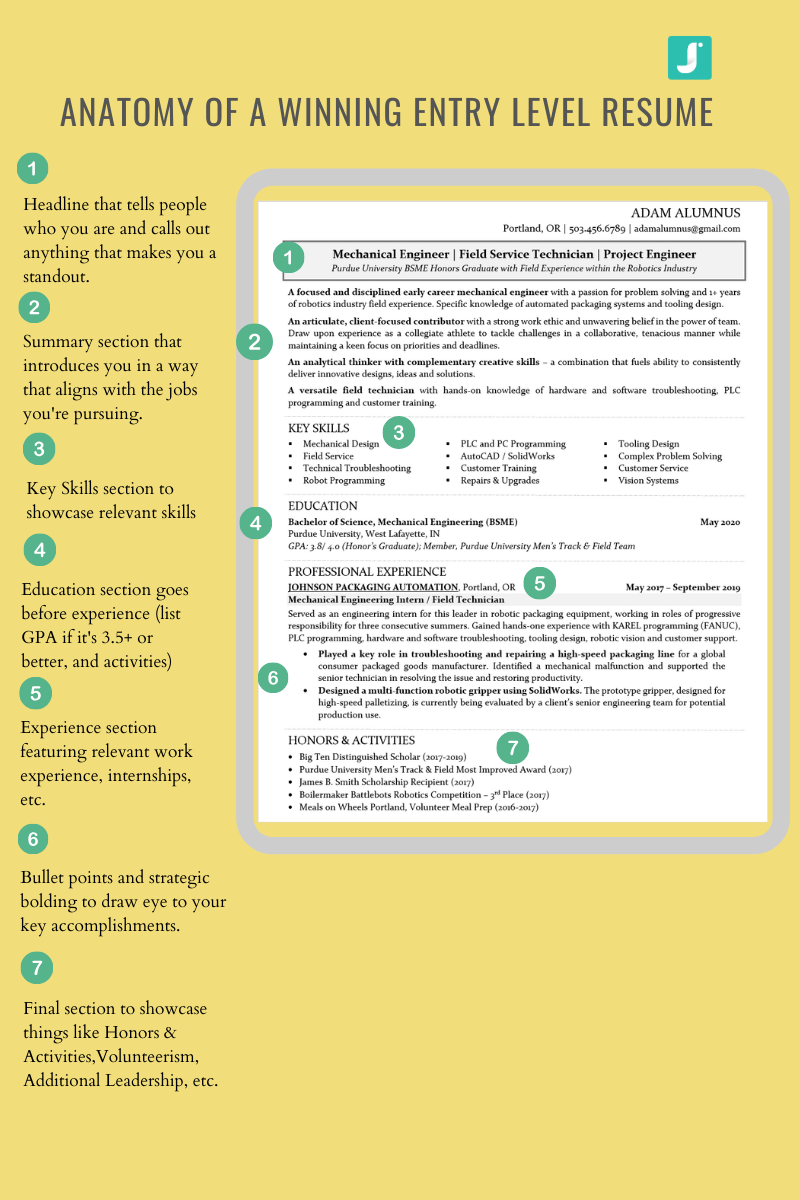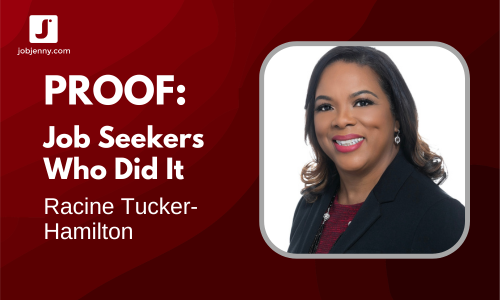The Anatomy of a Winning Entry Level Resume
This is an excerpt from our just-launched ebook: How to Land Your First Job.
Dedicated to the #Classof2020, this quick and actionable guide walks new grads step-by-step through the process of creating a winning job search strategy, and a killer resume, LinkedIn profile, and cover letter to accompany that strategy. It also provides tips on networking, interviewing and navigating the specific challenges of job search during #COVID times.
Resume writing is hard
Creating a strong, results-generating resume is enormously challenging for most people. It can feel particularly daunting if you’re a new grad heading into your very first (official) job search.
It just feels so weird writing about yourself, doesn’t it?
And, if you don’t have much experience (which, you probably don’t), what are you supposed to write?
Furthermore … between the input you got at the Career Services office, your mom’s unsolicited advice (we won’t go there), and that YouTube “career expert” you stumbled upon last week … you might be left wondering whose advice you should be listening to.
HALLLLLLLP.
Fear not, new grad. While there are certainly no absolute rules here, there are some basics when it comes to crafting an effective entry-level resume.
Rule #1
Before we get into the nuts and bolts, let me share this crucial tidbit:
Your resume can and should be specifically targeted to each job you apply for.
Yes, you can have one main version, but you should update it every time you send it out, to ensure the key points for that specific job come through loud and clear in your document.
I’m not suggesting you have to overhaul the thing every time, but the more “you on paper” looks like a match to recruiters (and electronic resume scanning software), the better the odds are that they will want to talk.
Components of a Kick-Ass ENTRY LEVEL Resume
The Basics
Right at the top of your resume, you’ll want to include the following things.
Your name. (Duh.)
Your address (just city and state are fine), email and phone number.
You can also include your LinkedIn profile URL, but I’ll suggest only doing so if you’ve created a vanity URL.
A Headline
A headline that accurately and loudly introduces you, with your target audience in mind. It should be keyword-rich and tell the reviewer right away who you are professionally, and what you specialize in.
The main header can spell out the titles of jobs you’re suited for, and the subhead gives a bit of additional color on what makes you a standout. You can (and should) change up your headline based on the job you’re applying for.
A Summary Section
You may have heard that you should have an Objective Statement at the top of your resume. Something to the effect of:
Recent mechanical engineering graduate seeking a challenging opportunity in sales at a fast-paced, growing company.
Blerg.
You don’t want to waste this opportunity telling employers what THEY can do for you. You want to use this prime spot to showcase what you can walk through their doors and deliver.
Instead, lay out who you are as a professional and what you specialize in, with (OF COURSE) your target job in mind in a “Summary” section.
A Key Skills Section
If you aggregate your core, relevant-to-the-jobs-you’re-pursuing skills into one section, you’ll make it very easy for the reviewer to see the things you know how to do, without having to go on a treasure hunt through the document. This section also provides you an easy means to embed keywords into your resume.
An Education Section
If your experience section isn’t particularly weighty, or if your education is not only important, but absolutely necessary to the jobs for which you’re applying, list Education before Experience.
You’ll want to include:
Your school
Your degree and major, minor or specialization
Your GPA or cum laude status, if it’s impressive. (If you spent your college years more immersed in the beach than biology, and your GPA reflects that, it’s OK to leave it off.)
Any special awards or honors you’ve received
Any study abroad or special programs you attended
An Experience Section
As you move on into the experience section, you might be thinking: “Um. About that professional experience….”
Yes, as a newly minted college graduate, you may be light on traditional professional experience. But hopefully there are at least a few things to include. Part-time or on-campus jobs? Internships? Absolutely stick ’em in there.
If that’s not going to fill the page, you may also want to include volunteer or leadership positions, like being captain of the lacrosse team, VP of Finance for your fraternity or head of a service project. If you had responsibilities that would be useful to a future employer — and, rallying fellow team members and managing budgets most certainly would — include those roles, too.
And if you really, truly have NO relevant professional experience? Elaborating on a couple of big projects from your coursework — especially those that simulate solving a real-life problem or that gave you some hands-on experience — can also work.
Here’s how you set it up:
For each job or experience, spell out what you were hired to do and the overarching nature of that job. Then, create a subsection that showcases a few key accomplishments.
Not sure what your accomplishments were? Ask yourself these questions:
What are you most proud of during your time there?
What did you do that others in the same position did not?
When you left, what will you be most remembered for?
A Technical Skills Section
Depending on the types of roles you’re applying for, you may want to showcase some of the software and tools you know how to use. Not Word or Excel — most people these days know how to use those — but if you have advanced skills in things in programs like Google Analytics, Salesforce or QuickBooks, and they’re relevant to the job, add them in a short section at the bottom of the page.
Extra Sections
Certainly, you may not need extra sections, but you may — Volunteerism, Additional Leadership Experience, Language Skills — you get the point. (And, don’t call these sections, “Extra Sections” (you already knew that). As you write, make the words earn their spot on the page.
Think strategically, and be sure to keep “impact,” “significance” and “accomplishment” top-of-mind as you craft this. Certainly, the reviewer wants to know what you were responsible for, but they’re (wayyy) more interested in know what makes you a standout.
Would you like step-by-step help?
Are you graduating in the class of #2020? (Or, is your son or daughter?)
Good news.
We’ve launched How to Land Your First Job, a comprehensive online guide just for you. (And, yep, it comes with sample resumes to guide you.)
And, if you’re a parent, you get your own complementary bonus guide, “How to Help Your Kid Get a Job (Without Being THAT Parent)”.
How to Land Your First Job is an easy-to-digest, actionable guide takes you step-by-step through the process of creating a winning job search strategy, and a new grad resume, LinkedIn profile, and cover letter to accompany that strategy.
It also provides tips on networking, interviewing and navigating the specific challenges of job search during these incredibly turbulent times.
You’ve piled up knowledge and achievements over all these years, graduate. Let’s get you out there to show the world what you’re made of.











